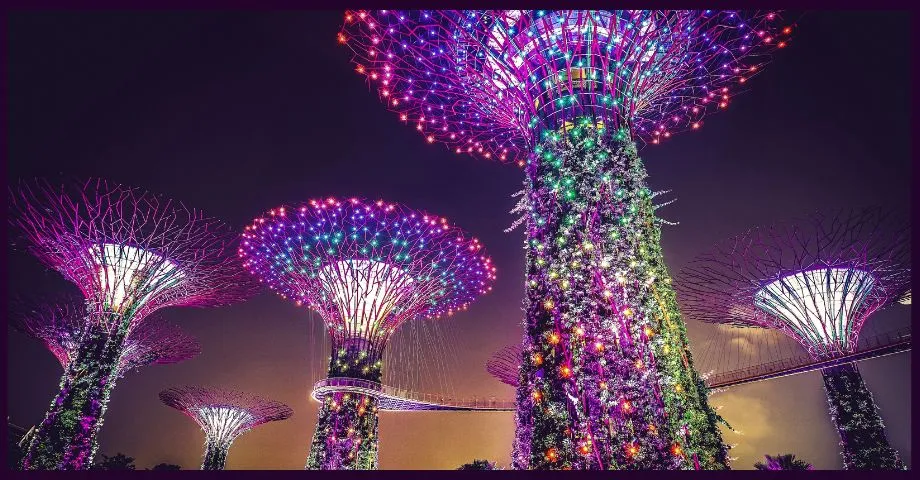Nestled in the lush green forests of the Western Ghats, the Rajmachi trek is a historical fort trek that offers mesmerizing views of the Sahyadri ranges. Overlooking the scenic Shirota Dam backwaters, the 17th-century Rajmachi fort is a popular monsoon trek perfect for adventure and nature lovers.
History of Rajmachi

Rajmachi consists of two beautiful twin forts – Shrivardhan and Manaranjan. It has a strong historical significance as this high-altitude mountain pass was used as a strategic trade route connecting the Konkan coastline and the Deccan plateau.
Some historians suggest that the construction of the Rajmachi fort was initiated by Sisodia ruler Raja Karan of Chittor in 1490 CE to monitor the Bor Ghat passage.
It was later captured by Chhatrapati Shivaji Maharaj and Udaybhan Rathod before finally coming under the control of the British Raj in 1818 CE along with other forts in the region.
Over the centuries, Rajmachi served as an important military outpost due to its vantage point and impressive fortification. The ramparts, gates, temples, water tanks, and other structures stand testimony to its grand and royal past. After India gained independence, this historical site was taken over by the forest department and also recognized as a popular trekking destination.
Trek Details
The Rajmachi Fort trek starts from the quaint village of Udhewadi and is a gradient climb through rugged terrain, dense foliage, streams, and waterfalls. Trekkers can choose between two different routes based on difficulty level and duration:
Udhewadi Route
The shorter trail of 7 km can be covered in 3 hours. The well-defined path passes through the village of Rajmachi and leads directly to the eastern entrance of the fort.
Lonavala Route:
The longer 14 km trail starts from Lonavala, goes through Karjat village, and takes about 5-6 hours to complete. The initial patch through Tungarli Dam and Duke’s Nose is rocky but leads to the western entrance.
The best time for the Rajmachi trek is during monsoon and winter between July to February when the landscape is greener and streams are full. The top of the fort offers spectacular views of surrounding peaks like Lohagad, Visapur, Tikona, and Prabalgad. Trekkers can also explore artifacts like canons, entrance gates, and the famous Shiva temple. For the complete experience, an overnight camping trip allows one to soak in the starry skies and tranquility of the hills.
What to Expect
The Rajmachi trek has something to offer adventure enthusiasts of all kinds with its unique landscape. Here’s what can be expected during the experience:
Scenic Nature Trails:
The journey to the citadel takes one through dense shrub forests, grasslands, rocky terrain, and waterfalls. The rich biodiversity of the Sahyadris can be witnessed through the slender loris, barking deer as well as many avian species.
Ancient Architecture:
The fort structure gives a glimpse into impressive defense fortification techniques of the 17th century. The entrance gateways, ramparts, temples, and water storage systems stand as remnants of the past.
Exciting Activities:
Trekkers can try night trekking under moonlight or participate in photography hikes to capture breathtaking views from the top. Experienced climbers can enjoy bouldering and rappelling on the steep slopes of Manaranjan or Duke’s Nose.
Rustic Camping:
pitching a tent under a starlit sky while enjoying a bonfire and barbeque makes for an unforgettable night. Music and munchies add to the rustic camping experience.
Village Hospitality: Interacting with locals in Udhewadi and having a homemade meal offers insight into regional culture and cuisine. This provides income generation opportunities through homestays.
Staying Safe on the Trek
The trail may throw unexpected challenges, but a few precautions go a long way in ensuring a safe trekking experience for all:
- Carry adequate water, light snacks, and first aid/medicines
- Check the latest weather update and plan for adequate daylight
- Wear comfortable clothing, shoes with good grip, and weatherproof gear
- Hike in groups with an experienced guide
- Share trek plan and regular updates with base contacts
- Maintain a steady pace; take timed breaks to avoid exhaustion
- Stay on the designated trail
- Set up camp only in safe, designated areas
By taking basic safety measures, trekkers of all ages and fitness levels can undertake and complete the Rajmachi Fort trek for a unique brush with history and nature.
Places to Stay
From luxurious resorts to budget dormitories, there are several accommodation options at the base villages as well as atop the Rajmachi plateau based on needs and budgets:
Udhewadi: The starting point of the shorter route has a few homestays, campsites, and guest houses amidst mango orchards.
Lonavala: The popular hill-station town offers high-end hotels to modest lodges suiting all pockets.
At the Fort: Staying within fortress grounds allows one to soak in history. Rajmachi Village House is a rustic guest house with a bonfire and local cuisine. Maharashtra Tourism Development Corporation (MTDC) also offers modest stone cottages. Multiple camping sites give an authentic experience but with basic facilities.
Conclusion
In today’s fast-paced urban existence, the Rajmachi trek offers a refreshing rendezvous with nature, adventure, and history. One doesn’t have to be an expert mountaineer or well-versed in the past to complete this journey. With reasonable fitness levels and some preparation, soaking in the scenic beauty and examining relics of the bygone era atop this Sahyadri fort can rejuvenate any traveler. This unique getaway lets one enjoy nature’s abundance, understand the human resilience of the past and return recharged to build a better future.
So get ready, pack light, wear a pair of good shoes, and head over to conquer the Rajmachi citadel for an up-close tryst with history along scenic nature trails. The experience will leave you with stories to tell and memories to last a lifetime!
This article is written by:

Nihal Cameron
Cameron is an avid traveler and passionate blogger who explores the world one adventure at a time. With a love for discovering new cultures, tasting local cuisines, and uncovering hidden gems, he shares captivating travel stories and insightful tips as a guest writer.




